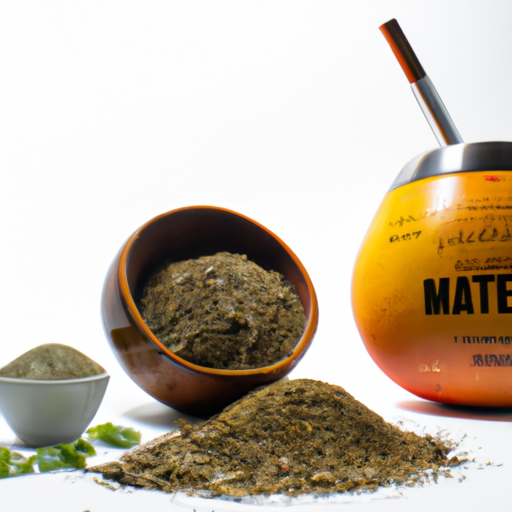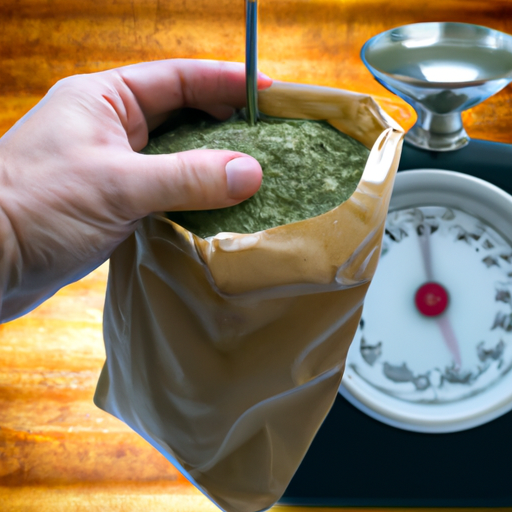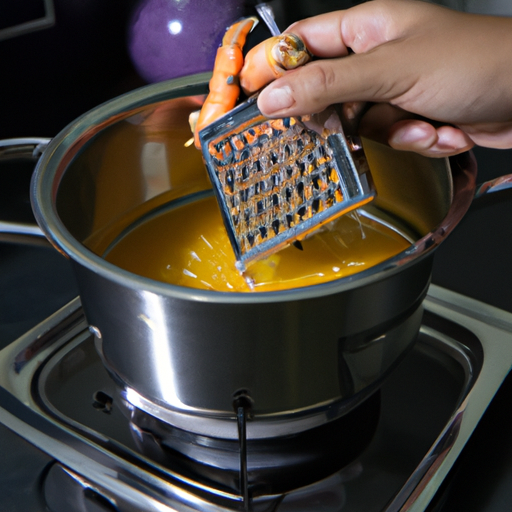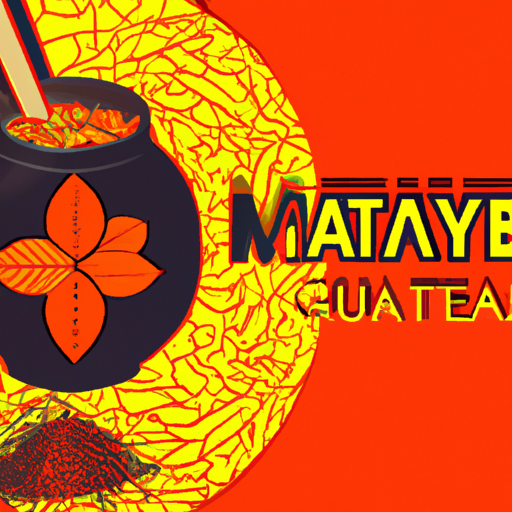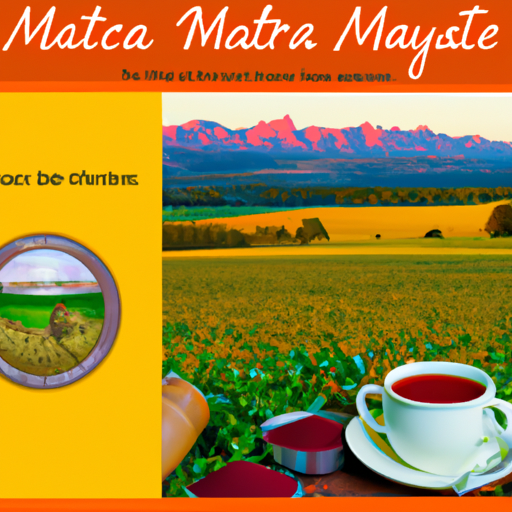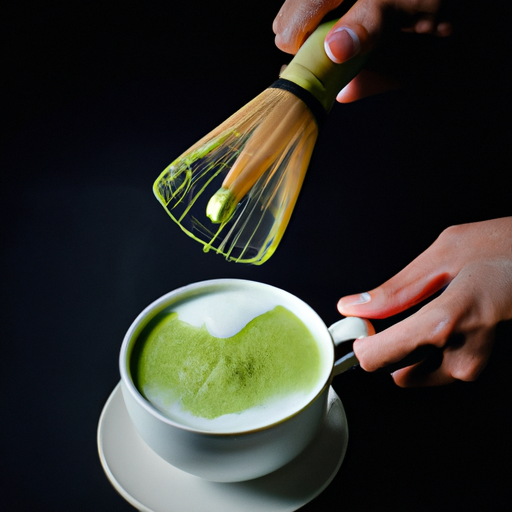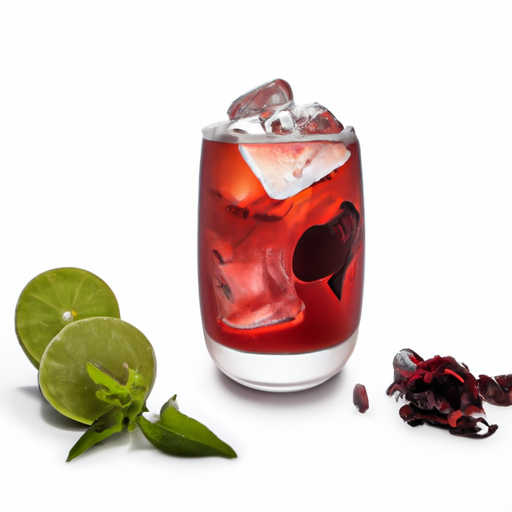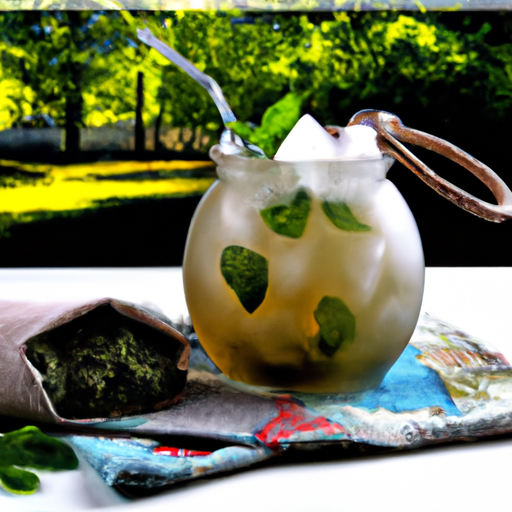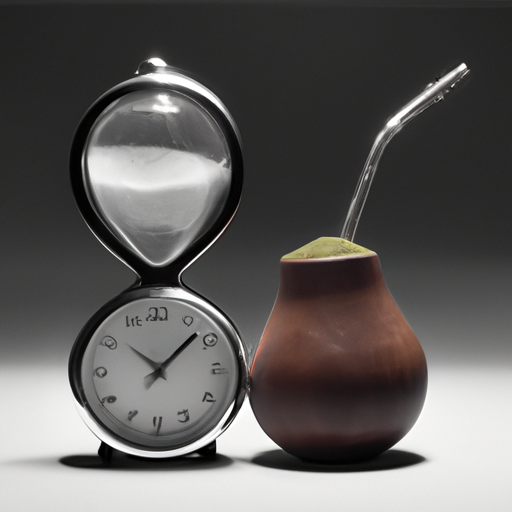Loose Leaf Tea Vs. Tea Bags: Which Is Better
Did you know that over 85% of tea consumed worldwide is in the form of tea bags?
But is convenience worth sacrificing flavor and quality?
In this article, we will delve into the debate of loose leaf tea versus tea bags, exploring the differences in flavor, brewing process, health benefits, environmental impact, cost, convenience, and variety.
By the end, you’ll have all the information you need to decide which option is truly better for you.
So, let’s dive in and discover the world of tea!
Key Takeaways
- Loose leaf tea offers a more concentrated and flavorful cup of tea due to the larger leaves and greater surface area for infusion.
- Loose leaf tea contains higher nutrient content and retains more vitamins and minerals compared to tea bags.
- Loose leaf tea generally contains higher antioxidant levels and allows for better nutrient extraction during brewing.
- Choosing loose leaf tea reduces potential health risks, environmental impact, and packaging waste, promoting sustainability.
Flavor Profile Comparison
If you want to experience a more robust and nuanced flavor profile, loose leaf tea is the way to go. Unlike tea bags, which often contain broken tea leaves or dust, loose leaf tea consists of whole tea leaves, allowing for a greater release of flavor and aroma notes. The flavor intensity of loose leaf tea is unparalleled, as the larger leaves have more surface area to infuse in the hot water, resulting in a more concentrated and flavorful cup of tea.
When it comes to aroma notes, loose leaf tea offers a sensory experience like no other. As you steep the leaves, delicate and complex aromas are released, filling the room with an enticing fragrance. You can detect subtle floral notes, earthy undertones, or even hints of fruitiness, depending on the type of loose leaf tea you choose. These aromatic compounds add depth and character to your tea, elevating the overall drinking experience.
Moreover, loose leaf tea allows for customization. You’ve the freedom to adjust the tea-to-water ratio, steeping time, and even blend different types of loose leaf tea to create your desired flavor profile. This level of control ensures that you can tailor your cup of tea to suit your personal preferences, resulting in a truly satisfying and enjoyable experience.
Brewing Process Differences
When brewing tea, you’ll notice that loose leaf tea allows for a more customizable and flavorful experience compared to tea bags. With loose leaf tea, you’ve the freedom to experiment with different brewing techniques and infusion times, resulting in a cup of tea that perfectly suits your preferences.
Here’s why loose leaf tea brewing is a game-changer:
-
Quality: Loose leaf tea is made up of whole, unbroken leaves that retain their natural oils and flavors. This leads to a more robust and complex taste compared to the crushed leaves found in tea bags.
-
Variety: Loose leaf tea offers a wide range of options, from delicate white teas to bold black teas. Each variety has its own unique brewing requirements, allowing you to explore different brewing techniques and unlock a world of flavors.
-
Aroma: When you brew loose leaf tea, the leaves have more room to unfurl and release their aromatic oils. This creates a captivating aroma that enhances your overall tea-drinking experience.
-
Control: With loose leaf tea, you’ve control over the infusion time. Adjusting the brewing time allows you to customize the strength of your tea, ensuring that it’s just right for your taste buds.
-
Sustainability: Loose leaf tea is often packaged in eco-friendly materials, reducing waste and promoting sustainability.
Embrace the world of loose leaf tea brewing, and discover the art of creating a truly exceptional cup of tea.
Health Benefits Analysis
When it comes to analyzing the health benefits of loose leaf tea versus tea bags, there are several key factors to consider.
First, the nutrient content comparison is crucial in determining which option is more beneficial for your overall well-being.
Additionally, the analysis of antioxidant levels can shed light on the potential antioxidant properties of each type of tea.
Lastly, it’s important to be aware of any potential health risks associated with the consumption of either loose leaf tea or tea bags.
Nutrient Content Comparison
You can find higher nutrient content in loose leaf tea compared to tea bags. When you brew loose leaf tea, the leaves have more room to expand, allowing the water to extract more of their nutritional value. Here are five reasons why loose leaf tea is nutritionally superior:
- The leaves are whole, preserving their natural oils and antioxidants.
- Loose leaf tea contains more vitamins and minerals due to less processing.
- The larger leaf size provides a greater surface area for the water to interact with.
- Loose leaf tea is often fresher, retaining more of its nutritional potency.
- The brewing methods for loose leaf tea allow for better nutrient extraction.
Now, let’s delve deeper into the antioxidant levels analysis.
Antioxidant Levels Analysis
If you’re interested in antioxidant levels, it’s important to consider the brewing method and quality of your tea.
When it comes to loose leaf tea versus tea bags, there’s a significant difference in the antioxidant absorption. Loose leaf tea generally contains higher antioxidant levels compared to tea bags. This is because loose leaf tea is made from whole tea leaves, allowing for more contact with the water during brewing.
On the other hand, tea bags often contain broken tea leaves or fannings, which have a smaller surface area and may result in lower antioxidant release.
Additionally, the brewing time also plays a crucial role in antioxidant levels. Longer brewing times tend to extract more antioxidants from the tea leaves.
Potential Health Risks
To ensure your health isn’t at risk, it’s important to be aware of potential health risks associated with certain brewing methods and tea quality. When it comes to loose leaf tea and tea bags, there are a few things to consider:
- Loose leaf tea is less likely to have potential contamination compared to tea bags, which may contain dust and fannings.
- Tea bags can sometimes contain pesticide residues that can be harmful to your health.
- Loose leaf tea allows for better control of steeping time and temperature, ensuring a healthier cup of tea.
- With loose leaf tea, you can see the quality of the leaves and avoid any low-quality or contaminated batches.
- Loose leaf tea often provides a richer and more nuanced flavor profile compared to tea bags.
By being mindful of these potential health risks, you can make informed choices about your tea consumption.
Now, let’s explore the environmental impact of loose leaf tea versus tea bags.
Environmental Impact
When it comes to the environmental impact of loose leaf tea versus tea bags, there are a few key factors to consider.
First, packaging waste is a major concern with tea bags, as they often come individually wrapped in plastic or foil. This not only generates unnecessary waste but also takes a toll on our landfills.
Additionally, the carbon footprint of tea bags is higher due to the energy-intensive manufacturing process and transportation required for the packaging.
Packaging Waste
You can reduce packaging waste by choosing loose leaf tea over tea bags. When you opt for loose leaf tea, you’re making a conscious choice to minimize your environmental impact. Here’s why:
- Loose leaf tea is typically sold in recyclable or compostable packaging, reducing the amount of waste that ends up in landfills.
- With loose leaf tea, you’ve the option to buy in bulk, further reducing packaging waste.
- Loose leaf tea allows you to portion out the exact amount you need, eliminating the need for individually wrapped tea bags.
- Tea bags often contain non-biodegradable materials like nylon or polyester, which contribute to plastic pollution.
- Choosing loose leaf tea also opens up a world of flavors and aromas that are often lost in tea bags.
Carbon Footprint
Now let’s dive into the carbon footprint of loose leaf tea and tea bags. When it comes to carbon emissions, loose leaf tea has a clear advantage over tea bags. The process of manufacturing tea bags involves more energy consumption and generates more greenhouse gas emissions due to the use of packaging materials like plastic and paper. On the other hand, loose leaf tea typically comes in minimal or recyclable packaging, reducing its carbon footprint.
But the carbon footprint of tea doesn’t end with manufacturing. The cultivation of tea leaves also plays a significant role. Sustainable farming techniques, such as organic farming and regenerative agriculture, can greatly reduce carbon emissions by promoting soil health, biodiversity, and natural carbon sequestration.
Cost Comparison
If you’re looking to save money, loose leaf tea is the more cost-effective option compared to tea bags. Not only does it offer better value for your money, but it also provides a richer and more satisfying tea-drinking experience.
Here are five reasons why loose leaf tea is the superior choice when it comes to cost effectiveness and taste preference:
-
Loose leaf tea is generally more affordable per serving compared to tea bags. You can get more cups of tea for the same amount of money.
-
Loose leaf tea allows you to control the quantity you use, ensuring that you make the perfect cup every time.
-
The leaves in loose leaf tea are larger and more intact, preserving their natural flavors and aromas. This results in a more robust and authentic taste.
-
Loose leaf tea offers a greater variety of flavors and blends, allowing you to explore and discover your personal favorites.
-
The process of steeping loose leaf tea is more involved and engaging, allowing you to fully appreciate the art and ritual of tea preparation.
With its cost effectiveness and superior taste, loose leaf tea is a fantastic choice for any tea lover. But convenience and portability are also important factors to consider. So, let’s delve into that next.
Convenience and Portability
When it comes to convenience and portability, you’ll find that tea bags offer a quick and easy solution for enjoying a cup of tea on the go. Tea bags are pre-packaged with the perfect amount of tea leaves, making it a hassle-free option for those who are always on the move. Simply toss a tea bag into your bag or pocket, and you’ll have a comforting cup of tea at your fingertips wherever you are.
However, it’s important to consider the drawbacks of tea bags. Tea bags are often made from lower quality tea leaves, resulting in a less flavorful and aromatic cup of tea. Additionally, tea bags can limit the expansion of tea leaves, preventing them from fully releasing their flavors during steeping. This can lead to a weaker and less satisfying brew.
On the other hand, loose leaf tea offers numerous advantages. Loose leaf tea consists of whole tea leaves, allowing for a more robust and complex flavor profile. The larger leaves also have more room to expand and infuse, resulting in a richer and more aromatic cup of tea. Moreover, loose leaf tea often comes in a variety of flavors and blends, providing a more diverse and enjoyable tea experience.
While tea bags provide convenience, the superior taste and quality of loose leaf tea make it the preferred choice for tea enthusiasts who value flavor and authenticity. So, next time you’re craving a cup of tea, consider reaching for loose leaf tea to elevate your tea-drinking experience.
Availability and Variety
With a wide range of options to choose from, you’ll be delighted by the availability and variety of tea flavors and blends. Whether you prefer the convenience of tea bags or the rich, full-bodied taste of loose leaf tea, there are plenty of options to satisfy your palate.
Here are some of the incredible flavor options available to you:
-
Earl Grey: This classic blend combines the boldness of black tea with the citrusy aroma of bergamot oil, creating a fragrant and refreshing cup of tea.
-
Chamomile: Known for its calming properties, chamomile tea offers a gentle, floral flavor that’s perfect for winding down after a long day.
-
Matcha: This vibrant green tea powder is packed with antioxidants and has a unique, earthy taste that’s both invigorating and soothing.
-
Jasmine: Fragrant and delicate, jasmine tea is made by combining green tea leaves with jasmine blossoms, resulting in a subtly sweet and aromatic brew.
-
Peppermint: Refreshing and invigorating, peppermint tea offers a cooling sensation and a soothing menthol flavor that’s perfect for digestion and relaxation.
With so many availability options and flavor options to choose from, you can explore a world of tea flavors and blends that will cater to your personal preferences and create a truly enjoyable tea-drinking experience. Don’t be afraid to try something new and discover your new favorite tea!
Frequently Asked Questions
Are Loose Leaf Teas More Expensive Than Tea Bags?
When considering loose leaf teas versus tea bags, you may wonder if loose leaf teas are more expensive than tea bags. Well, let’s dive into the cost comparison.
While loose leaf teas tend to have a higher initial price tag, they offer greater value in the long run. You see, loose leaf teas can be steeped multiple times, yielding more cups per serving.
Additionally, loose leaf teas generally have a superior taste compared to tea bags, making them well worth the investment.
Can Loose Leaf Teas Be Brewed Multiple Times?
Yes, loose leaf teas can be brewed multiple times. When you steep loose leaf tea, the leaves unfurl and release their flavors gradually. This means that you can reuse the same leaves for multiple infusions, allowing you to enjoy more cups of tea from a single serving.
The benefits of multiple infusions include getting different flavor profiles with each brew and maximizing the value of your loose leaf tea. It’s a wonderful way to savor the nuances of the tea leaves.
Do Loose Leaf Teas Have a Longer Shelf Life Than Tea Bags?
When it comes to the shelf life comparison between loose leaf tea and tea bags, there’s a noticeable difference.
Loose leaf teas generally have a longer shelf life than tea bags. This is because loose leaf teas are less processed and contain whole tea leaves, which retain their flavor and freshness for a longer period of time.
On the other hand, tea bags often contain broken tea leaves and dust, which can lead to a shorter shelf life and a decrease in flavor quality over time.
Are There Any Specific Health Risks Associated With Tea Bags?
Tea bags may seem convenient, but have you ever considered the potential health risks they pose? During the tea bag manufacturing process, chemicals and adhesives may be used, which can leach into your tea. These additives can disrupt your body’s natural balance and lead to health issues.
Furthermore, tea bags have an environmental impact as they contribute to waste and pollution.
Can Loose Leaf Teas Be Used in Tea Infusers or Only in Teapots?
Tea infusers are a great way to brew loose leaf teas. They allow for easy brewing and can be used with a variety of alternative brewing methods. Whether you prefer a traditional teapot or a convenient mug infuser, the choice is yours.
The beauty of loose leaf tea is its versatility. You can experiment with different infusers and brewing methods to find the perfect cup of tea that suits your taste.
Conclusion
In conclusion, loose leaf tea emerges as the superior choice when compared to tea bags. Not only does loose leaf tea offer a wider range of flavors and a more intricate brewing process, but it also boasts numerous health benefits.
Furthermore, loose leaf tea is more environmentally friendly, with less packaging waste and a smaller carbon footprint. While tea bags may offer convenience and portability, the variety and availability of loose leaf tea far surpasses that of tea bags.
Make the switch to loose leaf tea and experience a truly flavorful and enriching tea experience.
Fun fact: Did you know that loose leaf tea accounts for 60% of the global tea market?




